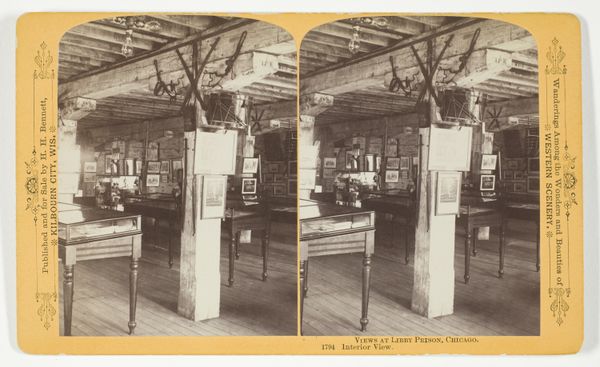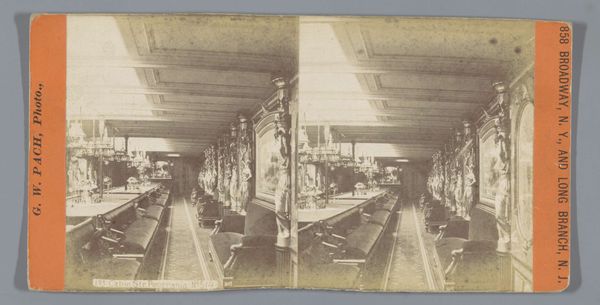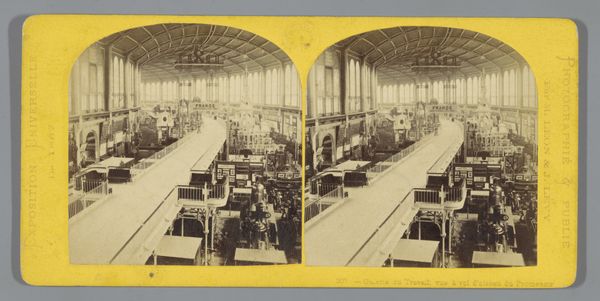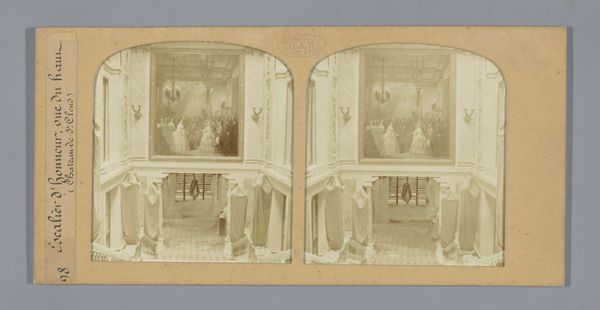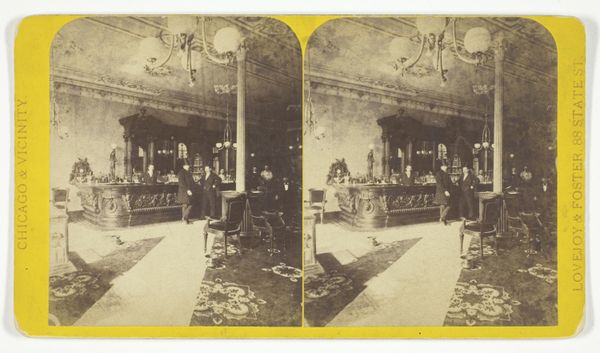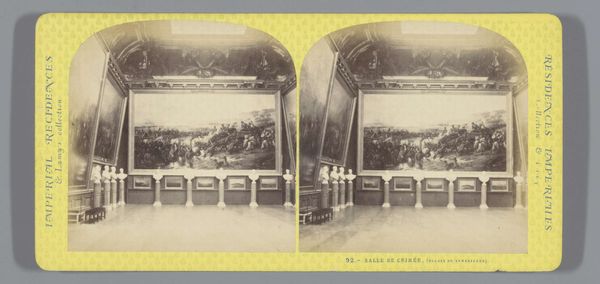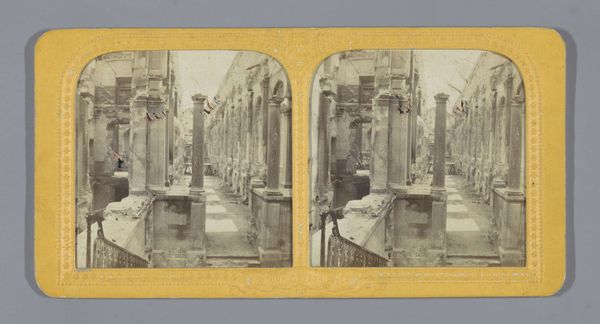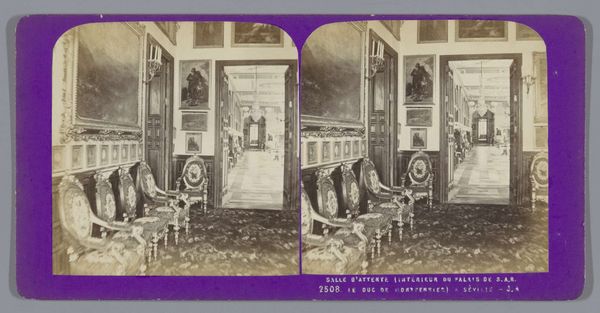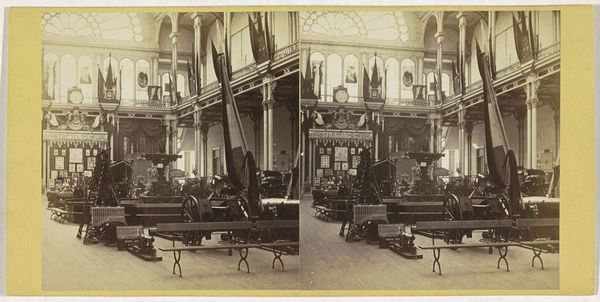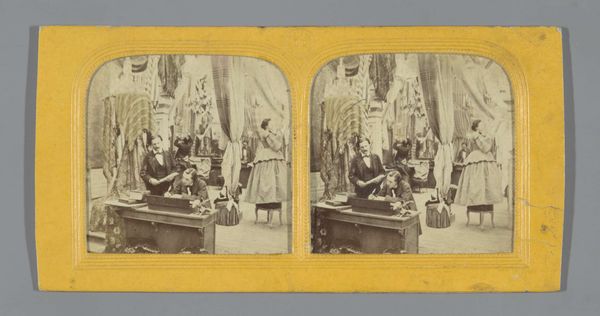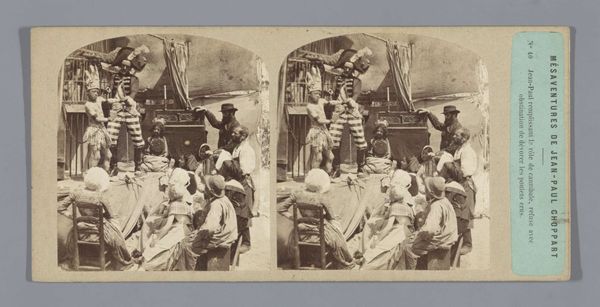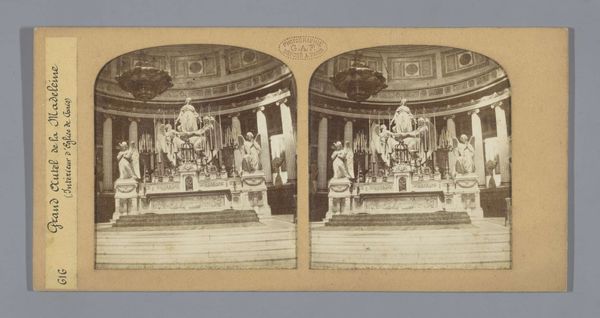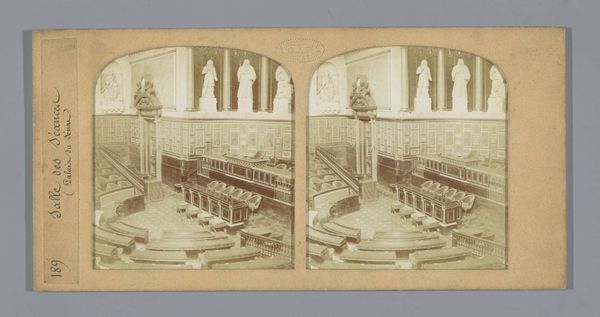
Machinehal op de Wereldtentoonstelling van 1878, met machines van de Gebr. Stork & Co uit Hengelo 1878
0:00
0:00
print, photography, gelatin-silver-print
#
16_19th-century
# print
#
photography
#
orientalism
#
gelatin-silver-print
#
cityscape
#
history-painting
#
academic-art
#
realism
Dimensions: height 87 mm, width 174 mm
Copyright: Rijks Museum: Open Domain
Editor: Here we have a gelatin-silver print from 1878, a photograph of the Machine Hall at the World's Fair in Paris. The image showcases the impressive machinery by Gebr. Stork & Co. of Hengelo. The whole scene feels so… ordered, but also imposing. What do you see in this piece, looking at it from your perspective? Curator: This photograph presents a fascinating snapshot of 19th-century progress and the industrial revolution. Consider the World's Fair itself – a site of both national pride and imperial ambition. Who was invited? Who benefited? These machines, presented as symbols of innovation, were also instruments that perpetuated colonial power dynamics and exacerbated social inequalities. The image seems to reinforce a Eurocentric idea of progress, where technological advancement is seen as inherently positive. How do we reconcile the apparent optimism with the historical realities of labor exploitation and resource extraction? Editor: So, beyond the nuts and bolts, we need to consider who this progress actually served, right? It makes me wonder about the lives of the workers back in Hengelo who built these machines. Did they share in the optimism? Curator: Precisely. And consider the visual language used. The photographic technique itself—gelatin silver print—was at the cutting edge of its time, allowing for mass production of images. Think about the power of representation; photography provided a means to promote a particular narrative, controlling how progress and industry were perceived by the public. Editor: I hadn't considered the photograph itself as part of the message, but it makes sense. It's like a carefully constructed advertisement. Curator: Exactly. What appears to be a straightforward documentation of technological achievement is, in fact, a highly curated message reinforcing a certain worldview and hiding other stories, struggles and sacrifices that underpinned the industrial age. Recognizing the embedded power dynamics within such an image gives us a better grasp of our present and encourages us to reimagine what “progress” should truly look like in the future. Editor: Wow, I’ll definitely look at these kinds of historical photos differently now! Curator: As will I. Considering photography and machines together provides important social and political perspectives.
Comments
No comments
Be the first to comment and join the conversation on the ultimate creative platform.
